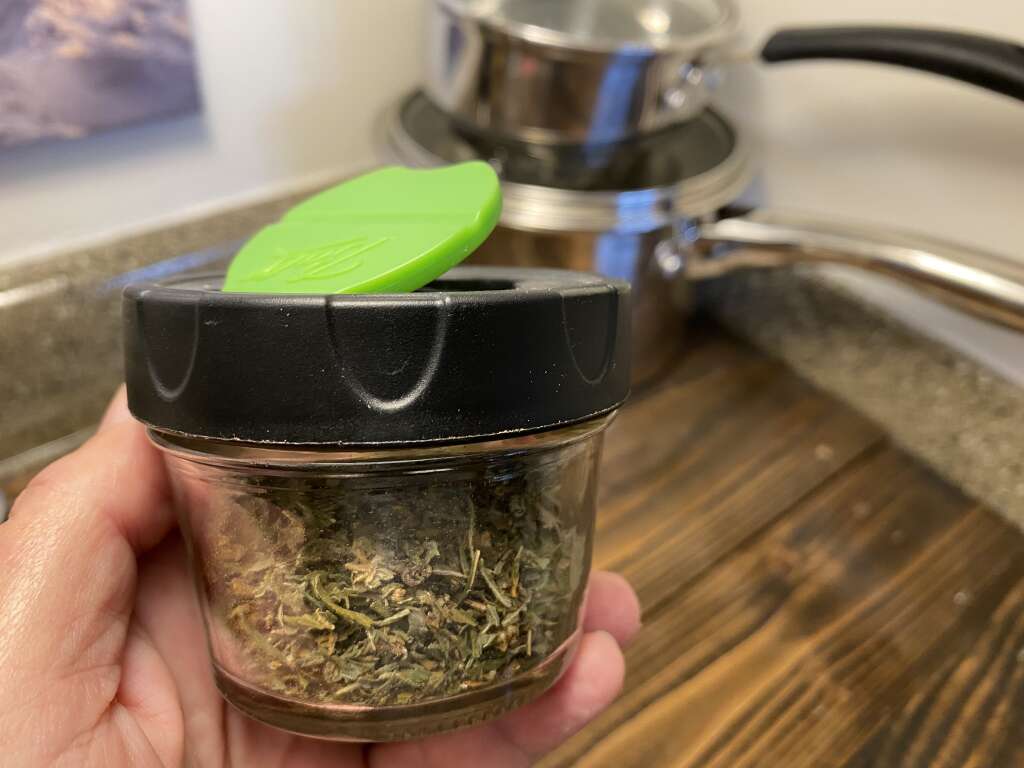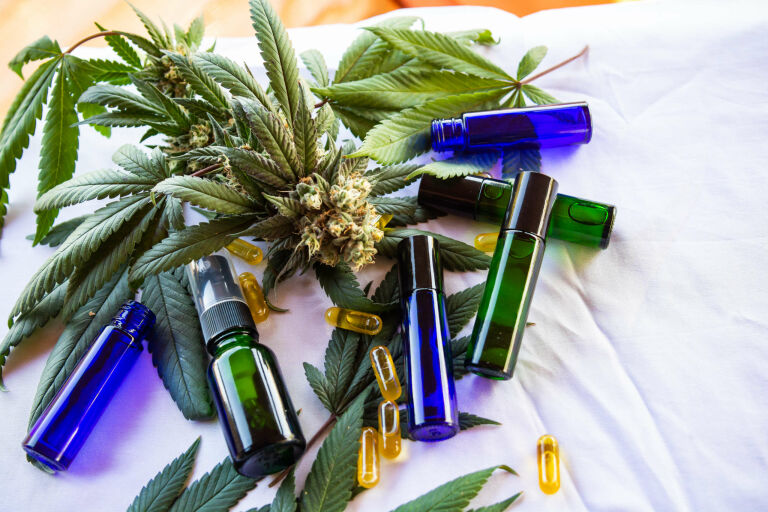In our previous article on cannabinoid acids, we learned of the many therapeutic benefits of incorporating the molecules into a cannabis therapy regimen. The need to keep decarboxylation from converting them into the energetic neutral cannabinoids presents unique challenges. Formulations of cannabinoid acids need protection from heat, air, and light to limit the transformations, and that means you’ll be needing cannabis therapy methods that protect those attached carboxyl groups.
Keep in mind that a well-rounded dose of diversified cannabinoids, in both acid and neutral forms, will give the endocannabinoid system more opportunities for helping a healing body get to homeostasis than will one restricted to one or two cannabinoids.
How does one actually add cannabinoid acids to their cannabis therapy regimen?
Down to the practicalities of actually using cannabinoid acids, you’re at a distinct advantage if you have access to a legal cannabis dispensary that carries products with these molecules, or are lucky enough to have access to fresh plants for your cannabis therapy.

For those with legal access:
Go shopping
A well-stocked dispensary will offer cannabinoid acid tinctures, capsules, edibles and topicals, making your job of adding them to your cannabis therapy regimen much easier. You won’t know how they work for you until you’ve tried them in your cannabis therapy regimen, and with the enviable safety profile of cannabis itself, there’s good reason to experiment.

Try juicing
The most effective way to introduce cannabinoid acids into the body is probably to juice the fresh plant material, which requires more fresh plant material than most of us will ever see or have access to.
If you’re one of the lucky ones that does have access, get a manual crank juicer to eliminate the complications of heat being a contributor to decarboxylation, and to spare you the expense of having to replace a regular juicer because the sticky cannabis oil burned the motor out.
There are fewer materials on earth more sticky than cannabis oil. Believe me, in time cannabis oil will destroy your expensive electric juicer.
A good rule of thumb to follow is ingesting the juice of ½ ounce of fresh cannabis plant material made primarily of flowers every day. Drink it straight or add to something that makes it easier to ingest. As with all cannabis edibles, the taste is an acquired one, and often it’s helpful to add it to something that will cover any undesirable tones.
Tomato juice has proven to be effective in this regard, but feel free to experiment, and don’t hesitate to add to your regular breakfast smoothie if it’s your habit to have one.
For those of us not yet blessed with legal access:

Season your food with raw cannabis
I have a growing number of senior friends who’ve been using ground, dry cannabis to sprinkle on their food much like a seasoning. Over time this cannabis therapy practice has led to a softening of many of the aches and pains we normally associate with aging, as well as add a layer of vitality greatly appreciated by those of us aging chronically.
It’s been an effective enough therapy that I heartily endorse its practice, with the caution that a small population of consumers may have digestive problems with the sharp points of the cannabis leaves. To limit this potential complication, it’s helpful to grind the leaf material into a fine powder, using a hand grinder to limit heat and decarb.
Storing the sprinkling herb in the refrigerator limits any decarb that would naturally occur over time if you leave it sit out.
Enjoy a cup of tea
Dig through the historical literature and you’ll find numerous references to the therapeutic benefits of cannabis tea. It offers a healthy shot of cannabinoid acids with a minimum of decarboxylation adding many neutralized molecules. The secret is in the limited 15-minute simmer – just long enough to release the oil from the trichomes, but not long enough to cause widespread decarb.
Cannabinoids, neutral or acid in nature, are difficult for the body to absorb through the gut on their own. It’s helpful to have a carrier high in fat for the released cannabis oil molecules to grab hold of. Adding cream or creamer to your brewed tea will offer that helping hand. Creamer will also keep the cannabis oil you worked to release from sticking to the side of your pan or drinking cup.
I add the cream directly after brewing and give the extracted cannabis oil a few minutes to grab hold before straining and storing.
I personally find this to be a delicious concoction when used for cannabis therapy that brings on a delightful sense of wellbeing. Lab testing by Dr. Arno Hazekamp and his fellow researchers has shown 200 ml of cannabis tea prepared by this recipe to offer approximately 2.0 mg of THC and 8.6 mg of THCA when prepared from cannabis yielding around 17% THCA.
That small amount of THC may be intoxicating for the sensitive consumer, so be alert if you’re concerned about euphoria. I’m always surprised at how psychoactive even a small amount of THC can be in a full plant extraction of oil, when all I did was simmer for 15 minutes.
Store leftover tea (with added cream) in a glass container in the refrigerator. Use minimal heat when serving leftovers to limit decarb.
Start with one cup a day and increase as you feel necessary.

With this starting guide to adding valuable cannabinoid acids to your daily diet & cannabis therapy regimen, you can now get busy finding more creative ways to naturally improve the quality of your life. We love to learn about new ways to use cannabis, and if you care to share your methods of adding cannabinoid acids with us, we have a handy comments section below for you to contribute to.
Remember, even with cannabinoid acids, the method of administration for cannabis therapy remains:



